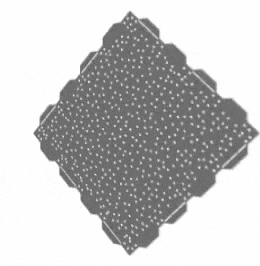When it comes to considering the pros and cons of turf fields versus that of traditional grass fields; there are a few factors you’ll want to take into consideration. From the onset, it’s important to state that turf fields are a constantly evolving technology. Most people just assume that turf is a standalone product, when in reality, there are various advanced components and layers of technology that get incorporated into successfully creating a turf field and those technologies are constantly evolving in themselves…
With all that being said, It’s also important to keep in mind that each project also introduces with it various challenges and costs that you’ll have to subjectively factor into your decision. But without further ado here is a list of the general pros, and the cons of turf fields:
Pros:
Increased Playing Time
When compared to natural grass fields, turf fields offer a tremendous advantage over grass fields in that they can be used daily and in all types of weather—both during and immediately after rain—with no concern of damaging the surface. With no “down time,” turf fields offer tremendously more playable hours than grass fields which need time to rest/recover.
Turf Fields Are Not Limited by Climate
One of the biggest advantages of a turf field is that turf isn’t constrained by the climate. Unlike traditional grass fields; where certain temperatures and conditions have to be present, or at least rigorously maintained year-round. Turf can be installed and yield consistent results with little to no worry in regards to the climate and conditions being just right. This subtle feature alone cannot be overstated enough.
Pesticide Free Chemicals
Unlike grass fields, turf fields don’t have to be sprayed and treated with pesticides and other chemicals to keep the grass from disease and other pest related disruptions.
Turf Fields Save Water
One of the more obvious benefits of turf is that turf doesn’t require a consistent input of water. In an increasingly warming climate, water becomes a huge factor to consider regarding the sustainability and the costs related to the maintenance of your field.
Turf Fields Result in Fewer Injuries
One of the great understated features about turf fields is the cushioned support that turf fields offer over traditional grass fields. Some studies have shown that turf fields actually help soften the impact resulting in fewer injuries for athletes.
Turf Fields Typically Require Less Time to Setup and Offer Faster Installation Than Traditional Grass Fields
Another distinct advantage that turf fields have over traditional grass fields is the installation process. Although there are various techniques available to transport and transplant grass and soil, the process overall is typically much longer and requires more logistical components to successfully implement. With advancements in base and sub-base technology, turf fields can be set up in a matter of weeks as opposed to months and even years.
Less Risk Associated with Soil and Other Related Growth Factors of Traditional Fields
Grass is a living organism. Unlike turf, grass has to continually be maintained and constantly monitored to yield consistent results. If the conditions are not right, grass can easily die out and very rapidly become unplayable, and in some extreme cases, this can happen overnight. Whether it be due to rapid climate changes, nutrient depleted soil, disease, or even pest related organisms, grass is susceptible to a large range of volatile constraints.
Less Resources Required to Maintain Turf Fields
Because grass is a living organism, it needs a lot more resources to maintain it. This includes, water, sunlight (or alternative energy sources), nutrient rich soil, pesticides, and other growing resources. Additionally, grass fields need to be continually and freshly cut throughout the season. All of this adds up to additional operational costs built into grass fields.
Generally, Turf Is Much More Cost Effective
Although it is true that turf still does need to be replaced after years of usage, generally the maintenance costs are much lower over time when compared with the continual upfront variable cost investments that natural fields must undergo.
Cons:
Turf Fields Have Negative Stigma Over Grass Fields
Although turf fields offer much more consistency and playability, among other great benefits; turf fields seem to still conjure up negative publicity over traditional grass fields. As an example, recently FIFA stirred up some controversy with their decision to host the 2015 Women’s World Cup on turf instead of natural grass. Unfortunately, the response was mostly negative; with the issue seeming to be more legacy related than anything else.
Reported Risks of Potentially Harmful Chemicals and Toxins
There are always bad apples in every industry and although rigorously disputed, there are still some reports of synthetic materials used in turf technology (like heavy metals) that can be potentially dangerous. That is why it’s very important to make sure you source out good suppliers and developers for your turf field technology.
Potential Heat Hazard Scenarios Reported
Although disputed, some turf fields have reportedly recorded higher than usual temperatures on their fields which could potentially result in various issues related to athletes and increased risks of dehydration among other factors.
Summary
Over the years, turf technology has continued to evolve, and with it, the ability to produce much more advanced technology over traditional fields. Although there are still some downsides to consider, turf fields seem to be yielding far more pros than cons.

Get Started with Ultra Base Today
Talk to an Ultra Base team member today to discuss your project, application, and pricing options. Our experienced team will ensure you're choosing the right Ultra Base product for your application.

